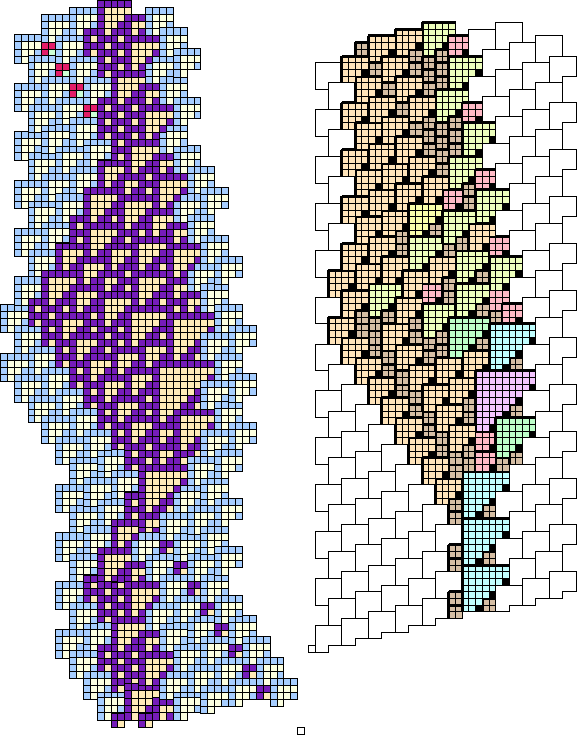 |
There is only one way that an A glider can approach a D glider, but there are two species of D glider, according to the way its left margin matches the ether. The two results are very different, because the collision rapidly promotes a D2 to a D1, but the conversion of a D1 into a C2 takes about twice as long. In Figure 3.6 the process is drawn using electronic quadrille paper.
The drawing on the left contains an error, but the drawing has been reproduced because it is a common error with instructive consequences. The main problem is that the first representation of the Rule 110 triangles which was used includes the hypotenuse as part of the tile. However, the upper left vertex of a tile contacting the hypotenuse must overlap the hypotenuse. The reason is that otherwise three ones in sequence would evolve into a zero, and not the one which forms the left edge of the triangle. It is extremely easy to overlook this requirement, especially if a small triangle like a T2 is being brought in.
 |
It is safer to leave the hypotenuse off the tiles, and to invent a T0 - just a single live cell - to fill in the parts of the diagonal which remain unused. In fact any T0's necessarily occupy alternate positions along the diagonal, and that is the only place where they are to be used. Which means that there are two parities for every tile, as can be seen upon close inspection of actual evolutions.
If it were simply a matter of an annoying error, the matter could be forgotten, or at least saved and brought out as a warning for anyone drawing an evolution by hand. But the results are often extremely interesting, even if they aren't part of a legitimate sequence of events. For example, Figure 3.6 was originally seen as providing a unit delay, which could have been useful in a circuit-theory approach to realizing a computation with glider collisions. As frequently happens, the errors are often more artistic and more interesting than true results.
An interesting way to exploit this blunder would be to work with a probabalistic cellular automaton, in which Rule 110 would be modified to the extent that the evolution of the neighborhood 111 to 0 could be reduced slightly by assigning it a probability of 97% or some similar figure, maybe even negligibly but still reliably less than 100%.